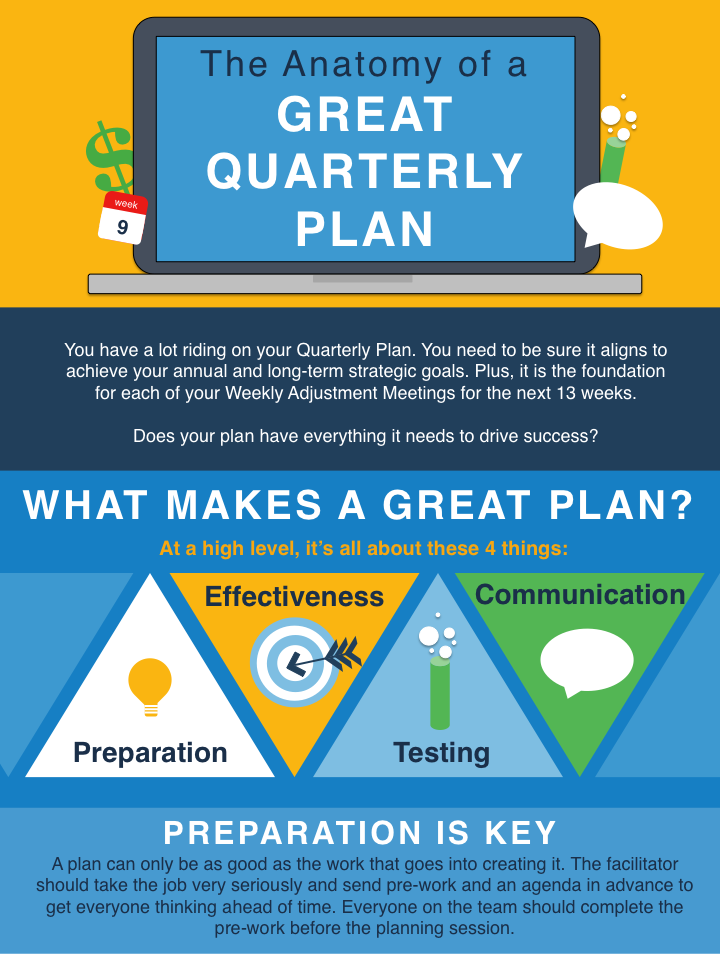Cascade Quarterly Plan Across the Company
Communicate the executive plan so each department can align to the goals.

Quarter Plan
For each department to align its goals for the quarter to the company's, they need to know the plan. Sharing plans across all departments can be challenging, especially when you have ten or more groups, geographic disbursement, and/or the inability to pull a whole team at once (like a 24-hour support team). For CEOs to close the strategy execution gap, they need to take this step to get everyone on the same page.
Here are some ideas that work:
Quarterly Planning Town Hall
This is a great format if your company has five or fewer Groups and everyone is located in the same office. In this example, the Executive Team and each of the Groups have already completed their plans. The next step is to have a Town Hall-style meeting where the Company Plan is shared and then Group Plans are shared, which we call cascade planning. Have an open discussion on cross-functional priorities and finalize things as a team.
Cascade Planning Offsite
This is a great format for companies with people spread out over multiple locations. It accomplishes quarterly planning and gets everyone face time with one another once a quarter. In this example, the Executive Team has finalized the Company Plan, but the Groups haven’t planned yet. Depending on the number of groups, it can take one or two days. From a high level, the agenda is: CEO shares the Company Plan with everyone; Groups go into breakout sessions to complete their plans; Groups get back together to share plans across departments and negotiate cross-functional quarterly priorities. Remember that a 90-day plan is a fixed amount of time - don't overload your team! Having fewer priorities done right is better than having an overextended team that doesn't execute against its plan.
Zoom Quarterly Planning
Teams are connected via web conferencing software like Skype, Zoom or Microsoft Teams. This format requires a facilitator to lead the call and some advanced preparation to identify conflicts ahead of time. Make sure that all of the participants use the video feed so that you can better communicate with each other and get the most out of your time together.
Virtual Quarterly Plan Communication via Software
Rhythm strategy execution software is a great format for companies that cannot travel to meet in person or cannot pull everyone off the front lines at once. For example, the Executive Team has finalized the Company Plan, and the Groups have the first draft of their plans in Rhythm. Next, Group Leaders use their team’s regular Weekly Meeting time to review the other Group plans. If they see priorities that raise a question or concern, the Group Leader records a Comment on that priority and notifies the necessary people immediately. Negotiations and finalizing of the plans
Adjust Your Quarterly Plan in Your Weekly Team Meeting
The only way to know if you need to make adjustments is to track your quarterly planning goals weekly.

Take your quarterly planning sessions to the next level.









